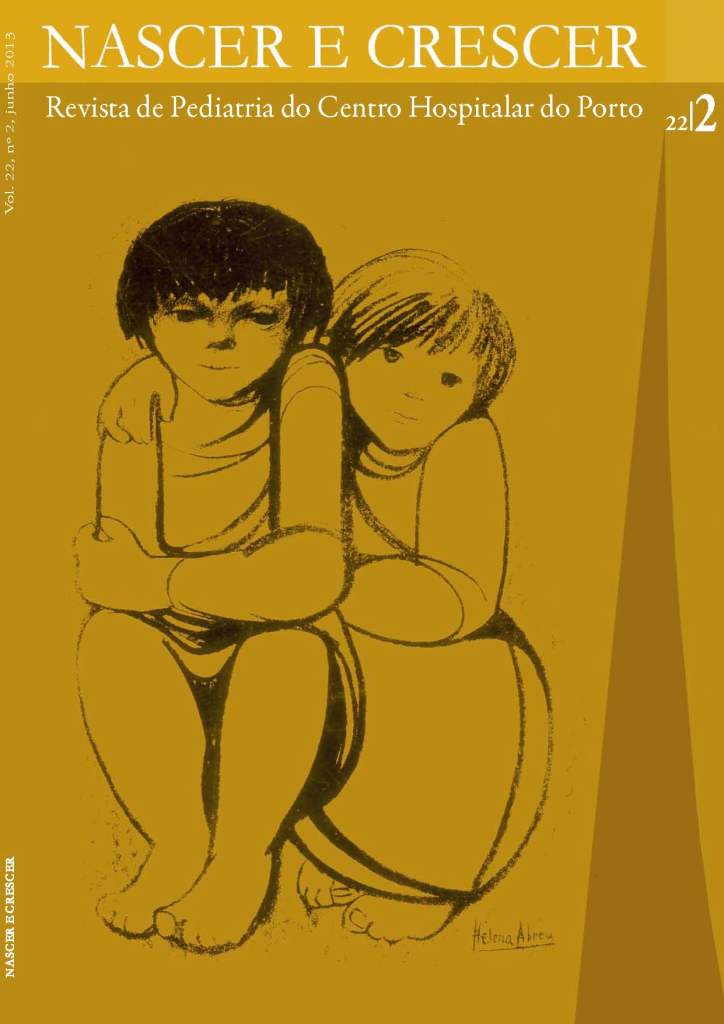FOOD ALLERGY IN CHILDHOOD
DOI:
https://doi.org/10.25753/BirthGrowthMJ.v22.i2.10752Keywords:
Child, food hypersensitivity, skin testsAbstract
Introduction: Food allergy affects up to 4 -6% of children. Cow’s milk and egg allergy are the main allergies, which are usually transient.
Purpose and methods: To characterize cases of persistent or less frequent food allergies in children followed as outpatient in a Level II Hospital. Diagnosis was based on clinical history, skin prick tests, specific serum IgE, ISAC and Imunoblotting in special situations, and in oral food challenge whenever possible. Egg allergy was excluded. One case of cow’s milk allergy was included because of its persistence beyond infancy.
Results: Twelve cases were selected, 75% (9) were male. There was a family history of allergy in 58.3% (7) and 83.3% (10) had more than one atopic disease. There were seven cases of kiwi fruit allergy and four cases of multiple food hypersensitivity. Clinical presentations were: urticaria [66.7% (8)]; lips edema [63.6% (7)], angioedema [41.7% (6)] and dyspnoea [45.5% (5)]. All skin prick tests were positive, unlike the laboratory tests (case 5:, skin prick tests and oral food challenge positives to the kiwi fruit, with specific serum IgE, immuno solid-phase allergen chip and immunoblotting negatives) Of the five patients who underwent oral food challenge, only one acquired tolerance
Conclusions: In these cases, most children had co-sensitization with other allergens, as well as another manifestation of concomitant allergy, showing the role of food allergy in allergic march. Food allergy diagnosis is extremely important, as it can be potentially serious if not prevented by food avoidance.
Downloads
References
Uguz A, Lack G, Pumphrey R, Ewan P, Warner J, Dick J, et al.
Allergic reactions in the community: a questionnaire survey
of members of the anaphylaxis campaign. Clin Exp Allergy
; 35:746 -50.
Lasley MV, Shapiro GG. Testing For Allergy. Pediatrics in Review
; 21:39 -43.
Sampson HA. Update on food allergy. J Allergy Clin Immunol
; 113:805 -19.
Kolacek S. Food hypersensitivity in children. Acta Med Croatica
; 65:155 -61.
Lucas JS, Lewis SA, Hourihane JO. Kiwi fruit allergy: a review.
Pediatr Allergy Immunol 2003; 14:420 -8.
Almeida MM, Prates S, Pargana E, Arêde C, Godinho N, Tavares
C, et al. Alergia alimentar em crianças numa consulta
de Imunoalergologia. Rev Port Imunoalergol 1999; 7:167 -71.
Gupta RS, Springston EE, Warrier MR, Smith B, Kumar R,
Pongracic J, et al. The Prevalence, Severity, and Distribution
of Childhood Food Allergy in the United States. Pediatrics
: 128:e8 -17.
Minford AM, MacDonald A, Littlewood JM. Food intolerance
and food allergy in children: a review of 68 cases. Arch Dis
Child 1982; 57:742 -7.
Branum AM, Lukacs SL. Food allergy among U.S. children:
Trends in prevalence and hospitalizations. NCHS Data Brief
; 10:1 -8.
Lucas JS, Grimshaw KE, Collins K, Warner JO, Hourihane
JO. Kiwi fruit is a signifi cant allergen and is associated with
differing patterns of reactivity in children and adults. Clin Exp
Allergy 2004; 34:1115 -21.
Aleman A, Quirce S, Carnés J, Férnandez -Caldas E, De Las
Heras M, Sastre J, et al. Kiwi fruit allergy: a double -blind,
placebo -controlled, food challenge study. J Allergy Clin Immunol
; 109:S218 -9.
Sicherer SH, Muñoz -Furlong A, Sampson HA. Prevalence of
seafood allergy in the United States determined by a random
telephone survey. J Allergy Clin Immunol 2004; 114:159 -65.
Sicherer SH, Munoz -Furlong A, Sampson HA. Prevalence of
peanut and tree nut allergy in the United States determined
by means of a random digit dial telephone survey: a 5 -year
follow -up study. J Allergy Clin Immunol 2003; 112:1203 -7.
Position paper. Allergen standardization and skin tests. The
European Academy of Allergology and Clinical Immunology.
Allergy 1993; 48:48 -82.
Kijima A, Murota H, Takahashi A, Arase N, Yang L, Nishioka
M, et al. Prevalence and impact of past history of food allergy
in atopic dermatitis. Allergol Int 2013; 62:105 -12.
Downloads
Published
How to Cite
Issue
Section
License
Copyright and Authors' Rights
All articles published in Nascer e Crescer - Birth and Growth Medical Journal are Open Access and comply with the requirements of funding agencies or academic institutions. For use by third parties, Nascer e Crescer - Birth and Growth Medical Journal adheres to the terms of the Creative Commons License "Attribution - Non-Commercial Use (CC-BY-NC)".
It is the author's responsibility to obtain permission to reproduce figures, tables, etc. from other publications.
Authors must submit a Conflict of Interest statement and an Authorship Form with the submission of the article. An e-mail will be sent to the corresponding author confirming receipt of the manuscript.
Authors are permitted to make their articles available in repositories at their home institutions, provided that they always indicate where the articles were published and adhere to the terms of the Creative Commons license.


